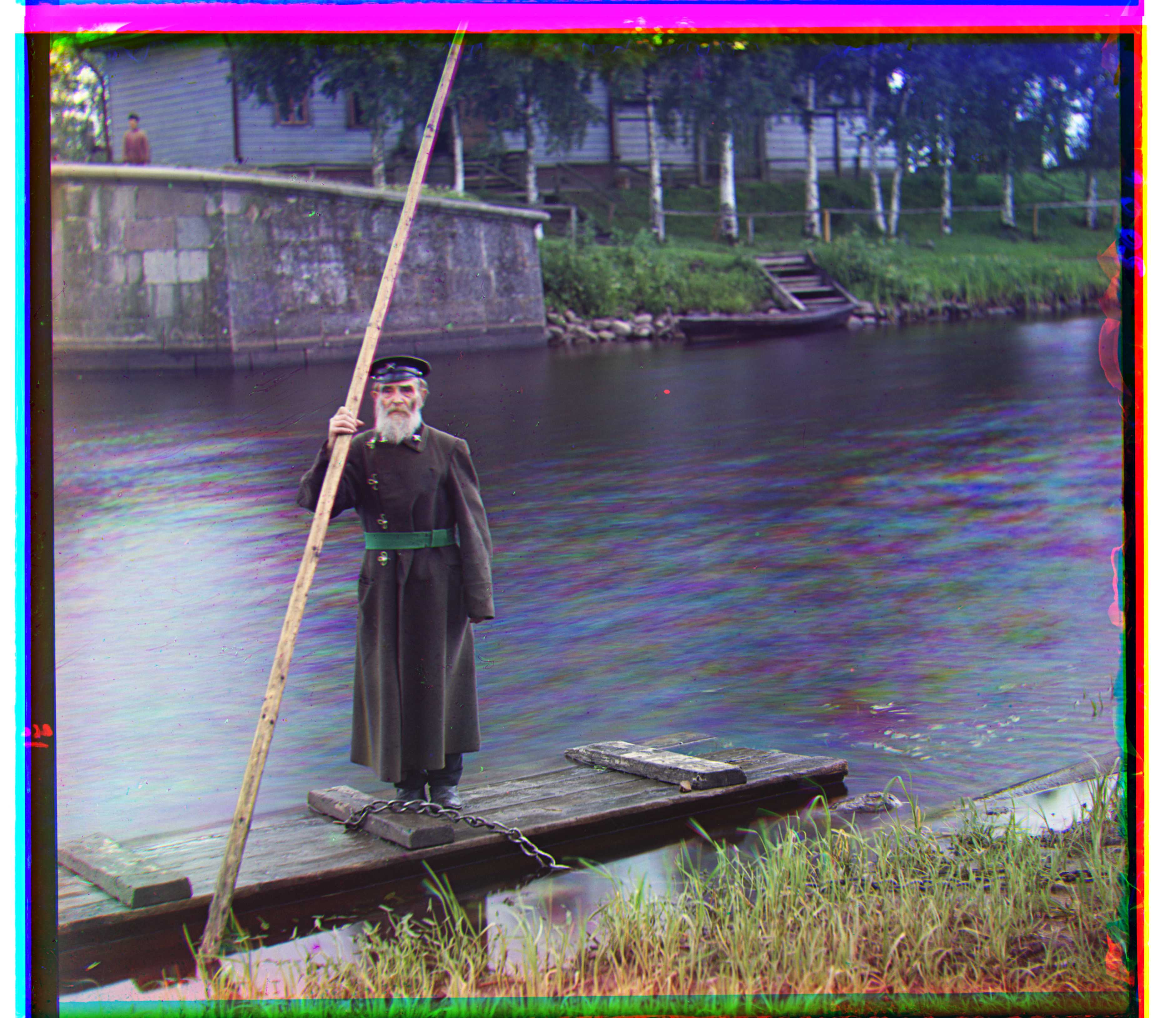Results of Aligning Given Images:
Offsets are represented as (X, Y).
X represents the shift to the right. Negative value means a shift to the left.
Y represents a shift down. Negative value means a shift up.
Offsets are in units of pixels
r and g were both shifted to align onto b
| Image Info | Aligned Image |
|---|---|
|
cathedral.jpg
g offsets: (2, 5) r offsets: (3, 12) 5.73 seconds |

|
|
emir.jpg
g offsets: (24, 49) r offsets: (43, 86) 32.59 seconds |

|
|
harvesters.jpg
g offsets: (16, 59) r offsets: (13, 123) 32.31 seconds |

|
|
icon.jpg
g offsets: (17, 41) r offsets: (23, 89) 33.56 seconds |
|
|
lady.jpg
g offsets: (9, 51) r offsets: (11, 112) 33.10 seconds |

|
|
melons.jpg
g offsets: (10, 81) r offsets: (13, 178) 29.05 seconds |

|
|
monastery.jpg
g offsets: (2, -3) r offsets: (2, 3) 6.05 seconds |

|
|
onion_church.jpg
g offsets: (26, 51) r offsets: (36, 108) 33.29 seconds |

|
|
self_portrait.jpg
g offsets: (29, 78) r offsets: (37, 176) 35.51 seconds |

|
|
three_generations.jpg
g offsets: (14, 53) r offsets: (11, 112) 33.13 seconds |

|
|
tobolsk.jpg
g offsets: (3, 3) r offsets: (3, 6) 6.11 seconds |

|
|
train.jpg
g offsets: (5, 42) r offsets: (32, 87) 31.80 seconds |

|
|
village.jpg
g offsets: (12, 64) r offsets: (22, 137) 34.83 seconds |

|
|
workshop.jpg
g offsets: (0, 53) r offsets: (-12, 105) 31.95 seconds |

|


















